Relevance, scientific significance of the issue with a brief review of the literature
The Delta robot belongs to manipulators with parallel kinematics, the widespread use of which is due to their better (compared to sequential manipulators) dynamic properties1−4 and increased accuracy and repeatability. The indicated advantages of the this type manipulators are ensured by the higher rigidity of the mechanism due to the fact that in them the fixed base is connected to the working link by several parallel kinematics chains, with each chain connected only to the working link and to the base.
One of the most widely used classes of parallel manipulators is the Delta robot. This new type of parallel manipulator was invented by Reymond Clavel5,6 in the early 80s. The main advantage of its design is the placement of actuators on a fixed upper platform and the use of parallelograms in three two-link parallel kinematics chains connecting it with a small movable lower one. The high speed of manipulating light objects is achieved precisely due to the fact that heavy drives are located on a stationary base, and all the moving parts of this mechanism are made of lightweight, often composite materials.
Placing the drives on a fixed base has created the opportunity to effectively use the advantageous quality of executive electric drives in Delta robots, since it is easier and more reliable to practically apply complex control algorithms in such drives than in other types of drives. However, a necessary condition for the realization of these potential capabilities is the presence of an adequate mathematical model for the controlled object.
Despite intensive research,5−17 the development of methods for mathematical modeling of the Delta robot dynamics is far from complete. In this publications the resulting models are unnecessarily complex due to these fact that not the most effective methods of analytical mechanics of non-free systems were used.18−23 Moreover, the method of mathematical modeling of geometric constraints used in all published works is, as will be shown, unjustifiably cumbersome.
This paper describes in detail a new approach to modeling the nonlinear geometric constraints of the Delta robot, which greatly simplifies the obtaining of a mathematical model of the system, reducing its dimension and opening up the possibility of using the previously developed24−36 general method for mathematical modeling of the controlled dynamics of non-free systems with geometric constraints. It should be especially noted that the approach proposed in this work allows us to avoid considering the inverse kinematics problem. In this work, using the example of modeling the dynamics of the Delta robot, we show how effective the qualified application of analytical mechanics methods is to the study of complex technical devices.
Delta robot design. Selecting variables sufficient to model its dynamics
In the Delta Robot (Figure 1), a small movable platform is attached to the fixed upper base by means of three two-link kinematics chains. The platforms have the shape of equilateral triangles with sides a and b respectively.
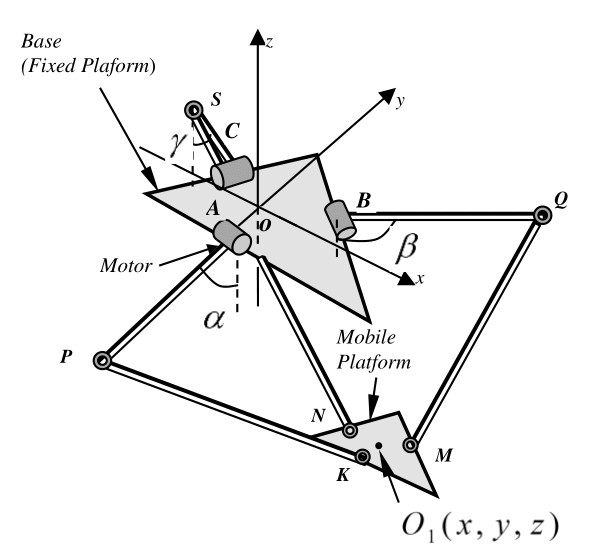
Figure 1 Scheme of the delta robot.
Let us introduce a fixed coordinate system Oxyz, the beginning of which point O is located in the center of the upper base, the z axis is directed vertically upward, and the x axis is along the symmetry axis of the upper base. Let us denote
- the angles of deviation of the shoulders AP, BQ, CS from the vertical and
- the center of the moving platform (Figure 3). The position of the system is determined by the parameters
. Let's take
- as independent coordinates, and let's
consider them dependent. It will be shown below that this set of variables is quite sufficient for a complete nonlinear modeling of the system dynamics. It should be especially noted that the approach proposed in this work allows us to avoid considering the inverse kinematics problem.
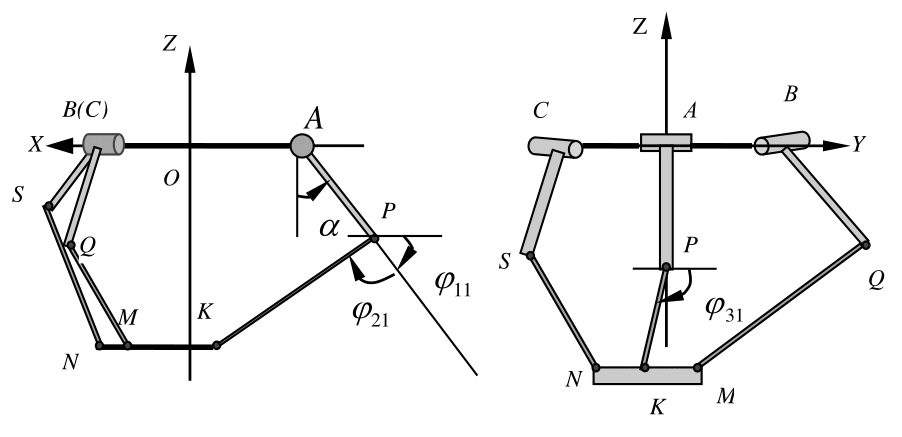
Figure 2 XZ-view.
Figure 3 YZ-view.
Schemes for traditional determination of angles in a moving platform.9
Traditional description of geometric constraints
All articles on modeling the Delta robot dynamics used a more extensive set of variables to determine the system state. Already starting from the works of Raymond Clavel5,6 and so far in all articles5−17 to determine the coordinates of the ends of the lower links of kinematics chains, three angles were used for each chain.
This leads to an unjustified complication of the study, since the coordinates of the attachment points of the lower links to the moving platform are determined by the standard procedure for multi-link manipulators by recalculating the coordinates of the subsequent node through the coordinate system associated with the previous one.
As a result, firstly, it is necessary to introduce two more additional angles for each chain (Figure 2,3,4,5), and secondly, there is a need to solve the inverse problem of kinematics (for example,6,8,9,10,15−17) to determine these angles included in the geometric constraint equations. Typically, the lower links are made in the form of parallelograms, which ensures translational motion of the lower platform. In almost all articles this circumstance is especially noted, but in none of them is this character of motion used.
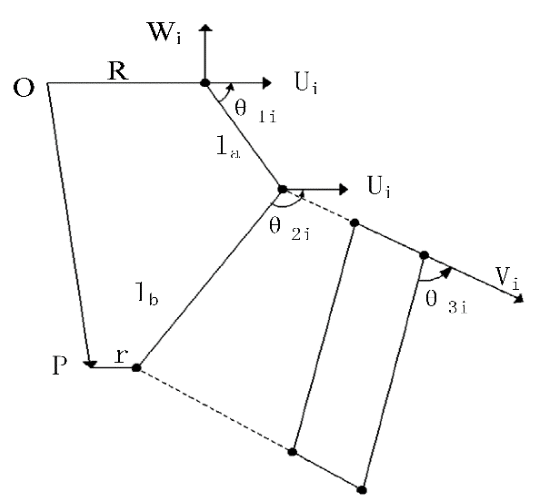
Figure 4 Schemes for traditional determination of angles in a moving platform.12
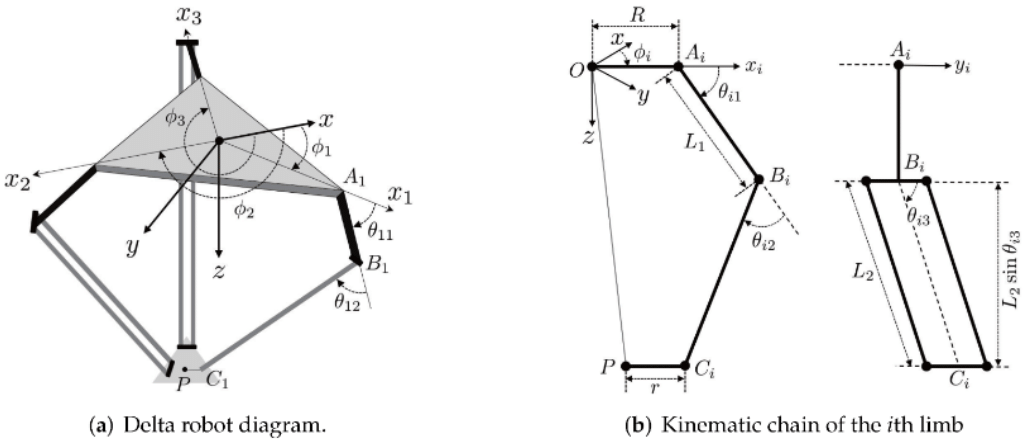
Figure 5 Schemes for traditional determination of angles in a moving platform.13
This method of determining the coordinates of nodes on a moving platform leads to an extremely cumbersome form of equations for geometric connections, especially if the Denavit-Hartenberg procedure is applied,10 despite their initial simple form - constant length of the lower links of kinematics chains (see e.g. formulas (10),(11),(12),15 (68).10 The by this method mathematical description of the behavior of the Delta robot obtained turns out to be so cumbersome and time-consuming to study that even additional assumptions that simplify the parameters initially included in the model (about the distribution of masses of links, see for example10) do not allow an analytical analysis of the dynamics of the modeled object. To a large extent, in addition to the extremely unsuccessful introduction of coordinates for the equations of geometric constraints, this is also due to the fact that in the modeling process it is proposed to find expressions for the Lagrange multipliers, using for this purpose differentiated cumbersome (with two additional angles for each constraint) constraint equations. This leads to the fact that research is limited to computer simulation, while in the analytical mechanics of non-free systems much more efficient forms of multiplier-free equations in redundant coordinates have been developed.24−26,18−21
New geometric constraints equations in the alternative delta robot dynamics modeling
In this work, an alternative nonlinear form of the equations of geometric connections will be obtained, based on the use of the translational nature of the motion of the lower platform. According to Figure 6 it is easy to obtain the coordinates of: the installation points
of the actuators in the middle of the sides of the upper base and nodes K, M, N on the lower platform:
Coordinates of the nodes
at the links
ends determined from Figure 7:
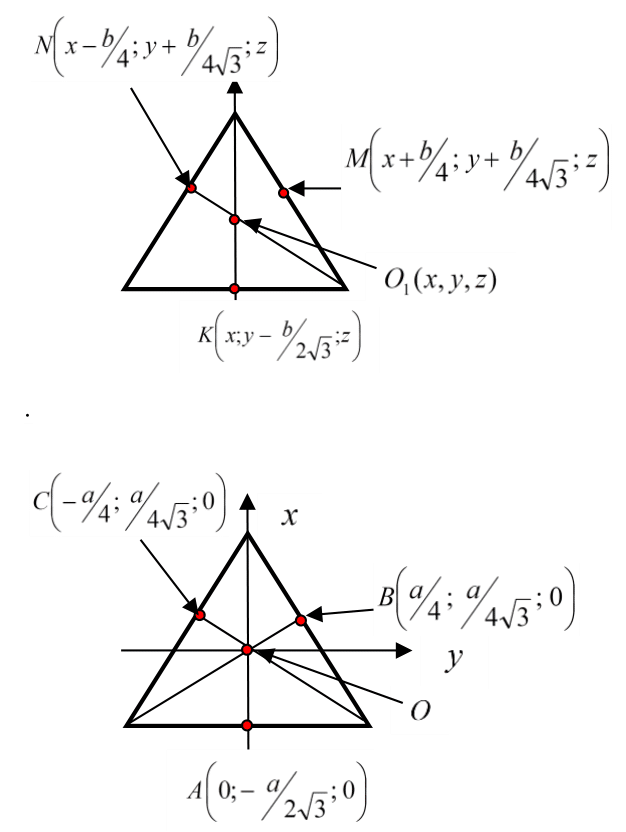
Figure 6 Alternative coordinates of nodes K, M, N of the lower platform (up) and the motors installation points.
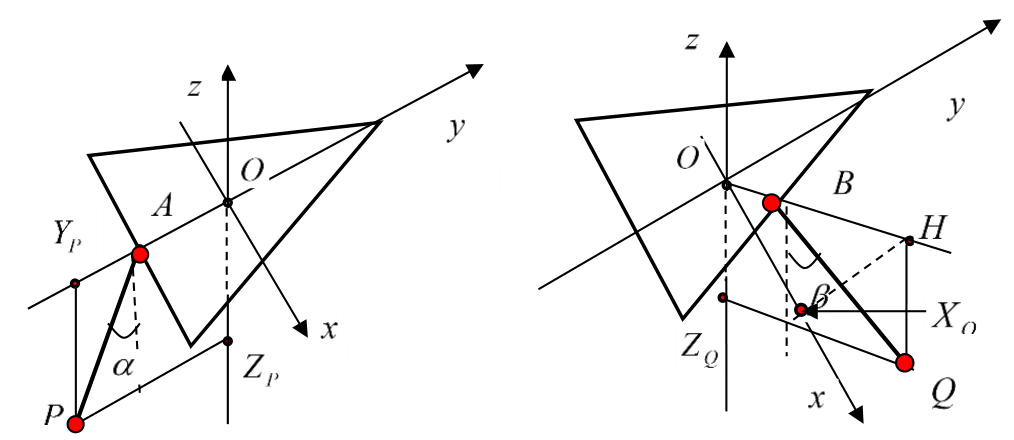
Figure 7 Schemes for determining the nodes coordinates in lower ends of the upper links.
Since during translational motion the trajectories of all points of the moving platform are identical, the coordinates of the nodes K, M, N fixed on it are determined through the coordinates of its center
using fairly simple expressions without considering the inverse problem of kinematics.
Let us note a fundamental difference in our approach - the coordinates of these points are expressed through the coordinates of the point and only three angles (and not nine [9] angles). Here is no need to consider the inverse kinematics problem. Geometric constraints are expressed by the three Pythagorean theorems.
(1)
After substituting into (1) the expressions for the coordinates of the corresponding points the equations of the three geometric constraints take the simplest form
(2)
Further simplification of the dynamics model
The simplicity of equations (2) in this case creates the possibility of simplifying a completely analytical study by using equations in redundant coordinates that are free from constraints multipliers.21,24−35 The dimension of the model is reduced in comparison with (86) [10] by a doubled number of constraints due to the exclusion from consideration of the constraints multipliers21,24,26−28,32−35 and the velocities of the dependent coordinates by the differentiated equations (2).
If we differentiate the constraint equations (2) with respect to time and bring similar terms, we obtain in analytical form a system of three equations with three unknowns
(3)
From (3), the dependent speeds are easily expressed analytically through the system parameters.
(4)
Let us introduce the Lagrange function
(5)
Where m is the mass of the links
, which we consider to be homogeneous inextensible rods; M - masses of drives and J the inertia moments of motor rotors, as well as measuring sensors and reductor. We neglect the masses of the levers PK, QM, SN. This approach is quite justified from a practical point of view, since usually in most manipulators such moving parts are made as lightweight as possible and made of lightweight composite materials. Taking these masses into account does not complicate the model,35 using (4), it is possible to implement the transition21,24−35 to equations in redundant coordinates, by excluding dependent velocities from the Lagrange function (5).
The dynamics of the simulated system can be described by the equations obtained using a well-known algorithm:32−35
Q is the vector of forces, related to independent coordinates.
Success in the study of any non-free system with geometric constraints is largely determined by adequate modeling of the constraints as simple as possible. It is the simplicity of the analytical form of the constraint equations that makes it possible to move to equations in redundant coordinates, which reduce the dimension of the mathematical model. This paper shows how choosing the simplest mathematical model of nonlinear geometric constraints can simplify research. Modeling of constraints must necessarily be nonlinear - Routh23 also pointed out that in the expansion of constraint equations it is necessary to take into account terms up to at least the second order, especially in stability problems. The problem of stability is one of the most important for automatic systems: it is ensuring the stable implementation of the specified behavior of the controlled object that determines the performance of the control system. For systems with geometric constraints, the solution to the question of stability cannot be obtained by considering only the first approximation, which is customary in technical practice.
In the general case, it has been proven24,27 that the stability of any steady motion of such systems is possible only in critical cases,36−39 since the characteristic equation of a first-approximation system always has as many zero roots as there are are constraints imposed on the system, and these roots are preserved under any control law. Therefore, for a valid conclusion about stability, the dynamics nonlinear model in an analytical form is necessary, allowing the structure analysis of nonlinear terms, since in critical cases a valid conclusion about stability can be obtained only from nonlinear terms. The application of the critical cases theory requires bringing the equations to a special form. This procedure requires the Aizerman-Gantmacher substitution40 from non-holonomic mechanics, which requires second-order terms in the constraint equations. For this reason, the modeling of the dynamics of systems with geometric constraints is subject to unusual requirements that are higher than those accepted in technical practice.
Even from such a brief review it follows that rigorous nonlinear modeling of the systems dynamics with geometric constraints is based on the complex application of general abstract theoretical methods of analytical mechanics of non-free systems20−23,35 and nonlinear stability theory.36−39 A rigorous, detailed abstract theoretical presentation of the proposed method with complete proofs of the results has been published in open access journal articles24,25,27−32 and in numerous articles in international conference proceedings.33,39,41−44 Due to their complexity, the rationale for the proposed modeling method cannot be briefly presented at a level that can be understood by a specialist with standard engineering training. However, as indicated in,29 for the practical application of the method, an understanding of the general theoretical results used in it is not required: an easy-to-use algorithm has been published, the use of which ensures the reliable obtaining of results substantiated in the method. This is precisely the main achievement of the conducted research.
The effectiveness of the practical application of the algorithm is demonstrated by solving problems of stabilization of systems with one41 and two42,43 geometric constraints. But the most detailed step-by-step presentation was published in the article,29 which presents four options for a complete solution to the problem of stabilizing a given equilibrium of the world-famous45 stand Ball and Beam (Figure 8).
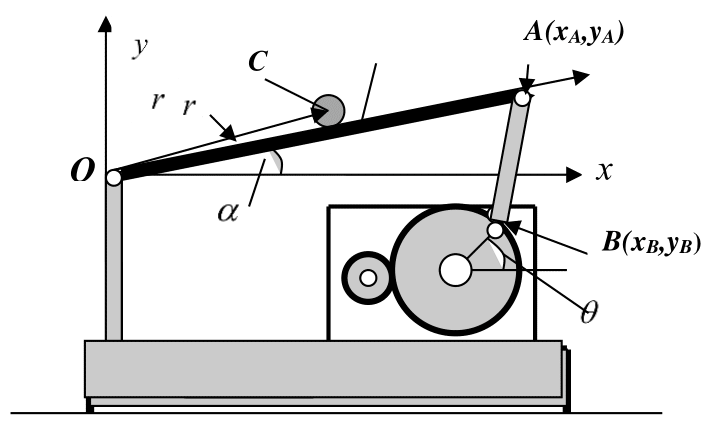
Figure 8 Scheme of the ball and beam stand.
In our opinion, specialists in technical practice can easily master the algorithm for the practical application of the method by analyzing all the stages of applying the method using the example of this real technical device. In29 the step-by-step implementation of the algorithm is given in detail. The presentation begins with the procedure for obtaining a complete (including a mathematical model of the drive) nonlinear mathematical model of the device, determining two equilibrium positions. In all the publications, only one of them was studied: the well-known equilibrium position θ=0 (Figure 9).
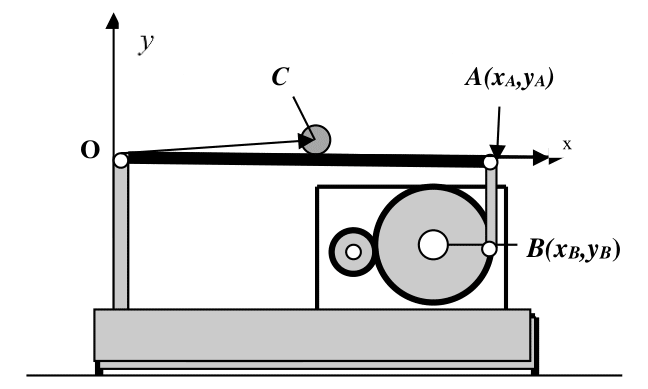
Figure 9 Known equilibrium position θ=0.
New equilibrium position θ≠0 (Figure 10) was found for the first time in,29 since in all publications before this article this new equilibrium could not be found due to linearization the geometric constraint26 (cf. Routh's remark above).23

Figure 10 New equilibrium position θ≠0.
Next, in the each equilibrium neighborhood, the perturbed motion equations were compiled for various options for choosing the dependent coordinate, the first approximation was allocated, and the substitution40 was studied. A linear controlled subsystem is identified, the asymptotic stability with respect to the variables of which ensures, according to theorem,24,27 asymptotic stability in a complete closed system. For four variants of the formulated stabilization problems, solution using the method of N.N. Krasovskii46 linear-quadratic problems for controlled subsystems found an additional voltage on the armature winding of an executive commutator motor with independent excitation. This voltage serves as a stabilizing control and is a linear function of the phase variables for the corresponding subsystem. For a specific stand GBB 1005, graphs of transient processes in closed systems were obtained. The adequacy of the modeling is verified by the complete coincidence of the graphs for controls as functions of time when substituting the current values of these variables from their transient processes into their expressions in the functions of phase variables.






